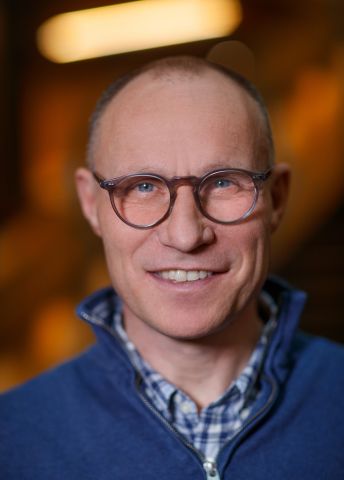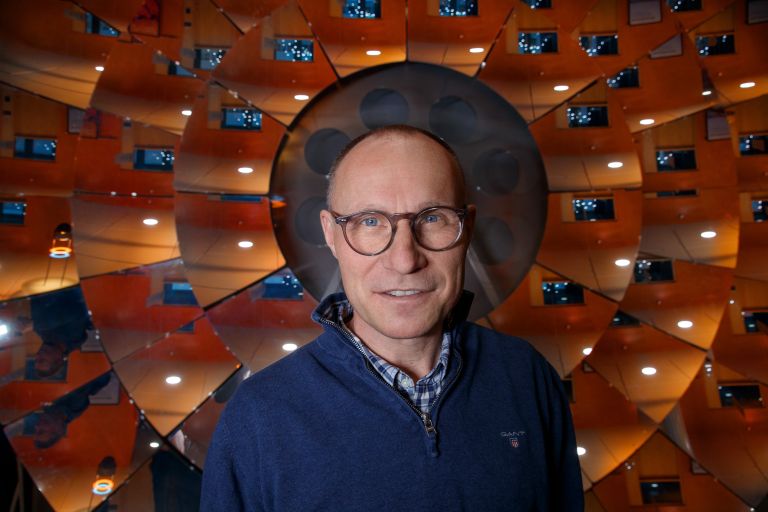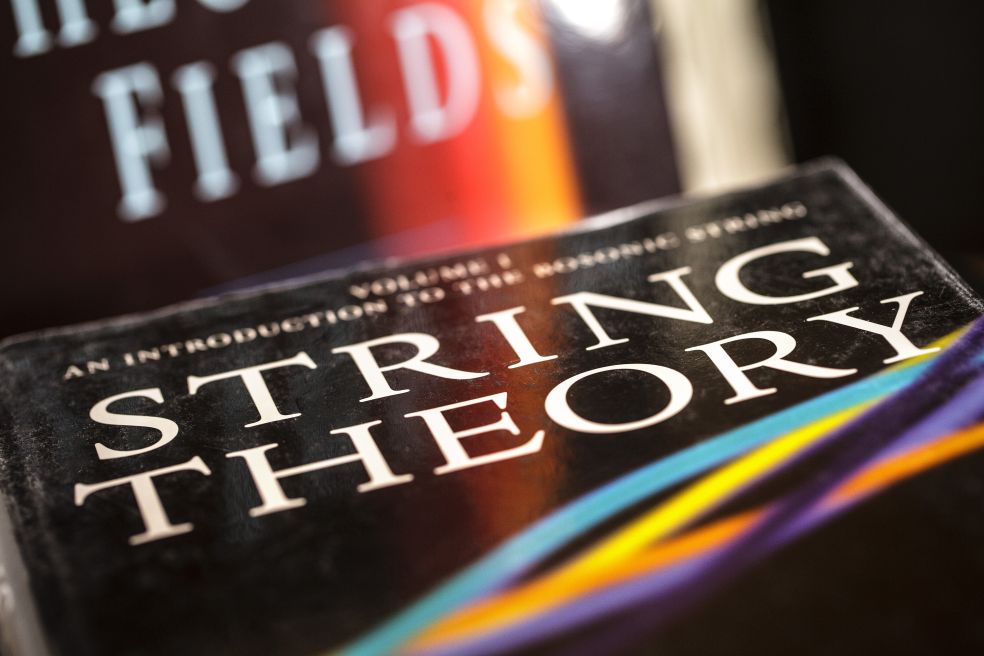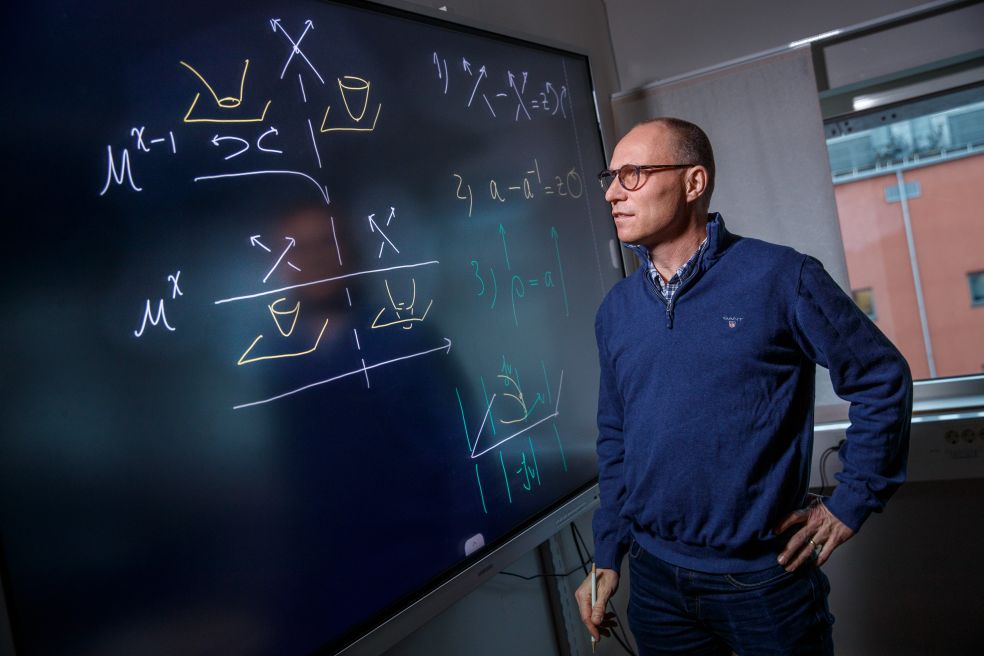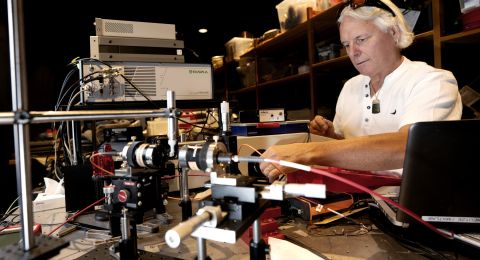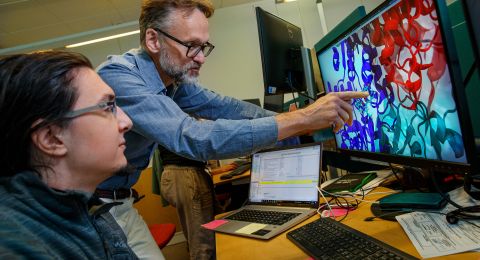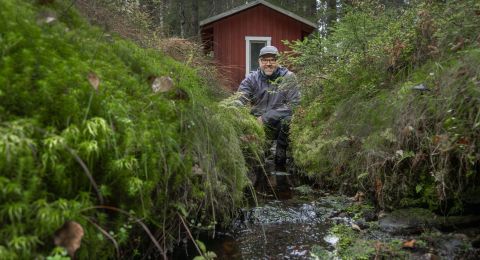Wallenberg Scholar Tobias Ekholm is now following up on his groundbreaking progress in geometry and mathematical physics, while also devoting time to building successful research environments. International contacts and exchanges are essential for new advances.
Tobias Ekholm
Professor of Mathematics
Wallenberg Scholar
Institution:
Uppsala University
Research field:
Topology, differential geometry, and symplectic geometry relevant to theoretical physics, particularly in string theory and quantum field theory
A new center of excellence in geometry and physics opened its doors at Uppsala University in 2024. Ekholm, a professor of mathematics and Wallenberg Scholar, was one of the instigators. When we meet him at the Ångström Laboratory, he emphasizes the importance of strong research environments to create the right conditions for mathematical research.
“Today we have a strong and broad national research environment for mathematics in Sweden. We need this so we can attract talented people who will stay and develop. Now we have created an environment where younger researchers can flourish,” says Ekholm.
Theoretical physics and geometry have both evolved rapidly in recent decades, largely thanks to an increased exchange of theories and ideas. A fundamental aim of the new center is to further increase exchange through more points of contact with mathematical research.
“Mathematicians and physicists still speak somewhat different languages. Meanwhile, geometry and physics is an emerging international field. The two areas combine in a way that can lead to unexpected results.”
The field is also Tobias Ekholm’s home ground. Since he returned from a postdoctoral position at Stanford, he has found himself at the intersection between mathematics and physics. It was also there that his biggest breakthrough was made.
Collaboration behind breakthrough
Early on in his career he researched mathematical knots, a branch of topology that studies the properties of spaces or objects regardless of size, shape or appearance. Among other things, knots can help us understand how DNA molecules fit inside the nuclei of cells. One challenge is to find new calculable methods to distinguish the knots. This can be addressed using both mathematical and physical methods. The breakthrough came when he came into contact with two physicists who had reached the same conclusions as he had, but using completely different methods.
“At first, none of us could understand how we had managed to arrive at the same result. But when we began collaborating, we were eventually able to understand the connection. Our work then led to a new mathematical relationship between symplectic geometry and topological string theory.”
A mathematician must constantly emphasize the long-term perspective. Even modern fields such as machine learning have needed a long time to solve the mathematical problems behind the methods.
Symplectic geometry develops ways of describing dynamic systems and structures. Very simply put, it is a kind of geometry that describes how movements and forces are connected. It answers questions such as how different objects can be deformed while retaining energy.
Developing a framework
After the collaboration, Ekholm published his conclusions jointly with the two physicists. But he continued to ponder the mathematical implications of the results.
“In the end, I gained insights that led to a breakthrough in topological string theory. Taking new paths opened up ways of uniting different variants of string theory. There are now a number of conceptual questions that we can address in a mathematical framework,” says Ekholm.
With continued funding as a Wallenberg Scholar, he looks forward to following up on the mathematics surrounding the framework.
One key aspect is time to think. He takes Isaac Newton as an example. When Newton was asked how he came up with the theory of gravitation, he replied: ‘by constantly thinking about it’.
“I don’t know whether he really said it or if it’s just a myth, but there is a lot of truth in that sentiment. Many advances in theoretical science come from persistent efforts over a long period. It is a craft that requires much time and a place where you can devote yourself wholeheartedly to the task.”
International arena
As a returning postdoc, he spent a great deal of time deepening his own research. It was then he also felt a growing desire to help develop research environments where more people could grow. He stresses that modern-day mathematics develops primarily through international collaboration.
Ekholm has been director of the Mittag-Leffler Institute in Stockholm for nearly a decade. Since the late 1960s, the institute has grown to become one of the world’s leading mathematical research institutions.
“The Mittag-Leffler Institute is a fantastic resource, not only for Sweden but for all the Nordic countries. A strong academic base of diverse mathematical environments centering on the institute has been created, which is what we need to achieve results.”
To move forward, role models are also important, and he names a number of people who have helped him see the field from new angles. He himself has become a role model in whom younger mathematicians can find support.
“Swedish mathematics now features an entire generation of successful people who are younger than I am. I’m glad to have been able to help improve conditions for them.”
Text Magnus Trogen Pahlén
Translation Maxwell Arding
Photo Magnus Bergström
